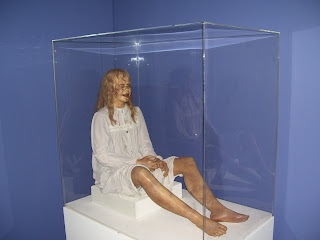One cannot live by music alone, and it was time for change of focus. I decided to make a trek into the borough of Queens to visit the Museum of the Moving Image. Located right by the Frank Sinatra High School for the Performing Arts, a beautiful new high school, the museum is putting the final touches on a major expansion. It is stunning in appearance and is easy to navigate in an hour but also interesting enough to keep one totally absorbed for at least four hours. In addition, there are frequent screenings of many different kinds of films, often with special events associated with them, For example, in January, Colin Firth and several other cast members from The King's Speech appeared for a discussion following the screening of the film.
The museum traces the history of the moving image from pre-motion picture days with optical toys and kinetoscopes through developments in motion pictures to the latest digital video games. This core exhibition includes everything one could imagine, including cameras, projectors, sound equipment, costumes, wigs, special effects, and so much more.
Special interactive exhibits allows museum visitors to do such things as impose sound effects on clips, inject their own voice into existing films (have you always wanted to be the voice of Oz the Magnificent?), choose different music soundtracks for existing films and much more.
There is a small-scale recreation of an old elaborate movie house that is often used for children's parties.
There are at least two special exhibit areas one of which presently contains a fascinating exhibit called Real Virtuality. Six visual artists from all over the world who work with digital kinetic media were commissioned to create works that represent cutting-edge experiments in art and technology:
The six installations in this exhibition were created by artists and technologists with backgrounds in architecture, painting, filmmaking, video art, and software engineering. They have in common their use of technologies developed for the digital entertainment industries. These installations employ video game engines, motion- and position-tracking, stereoscopic (3-D) digital video, and sophisticated image processing software to create simulated worlds that extend, augment, or disrupt the physical environment of the Museum space.







No comments:
Post a Comment